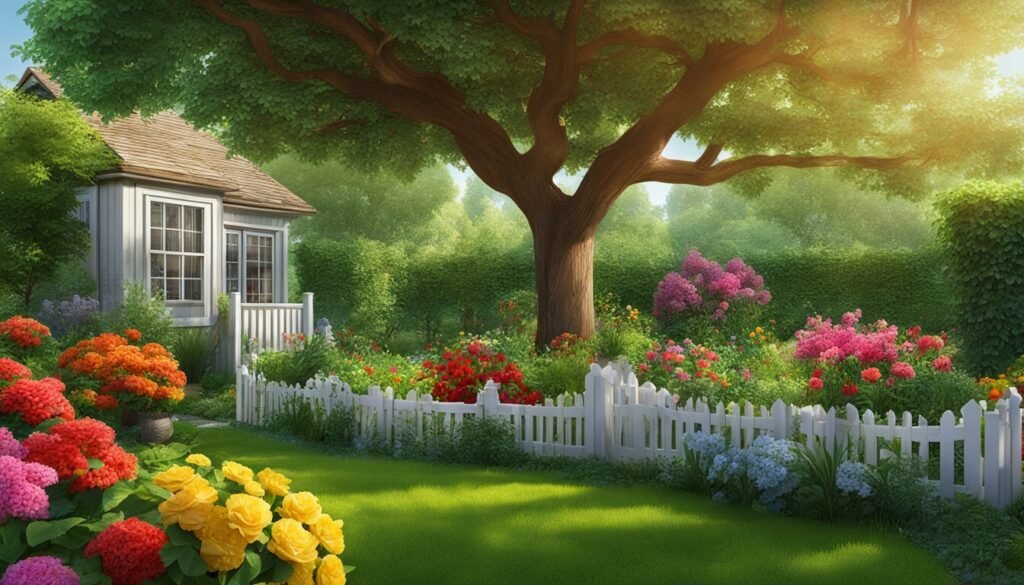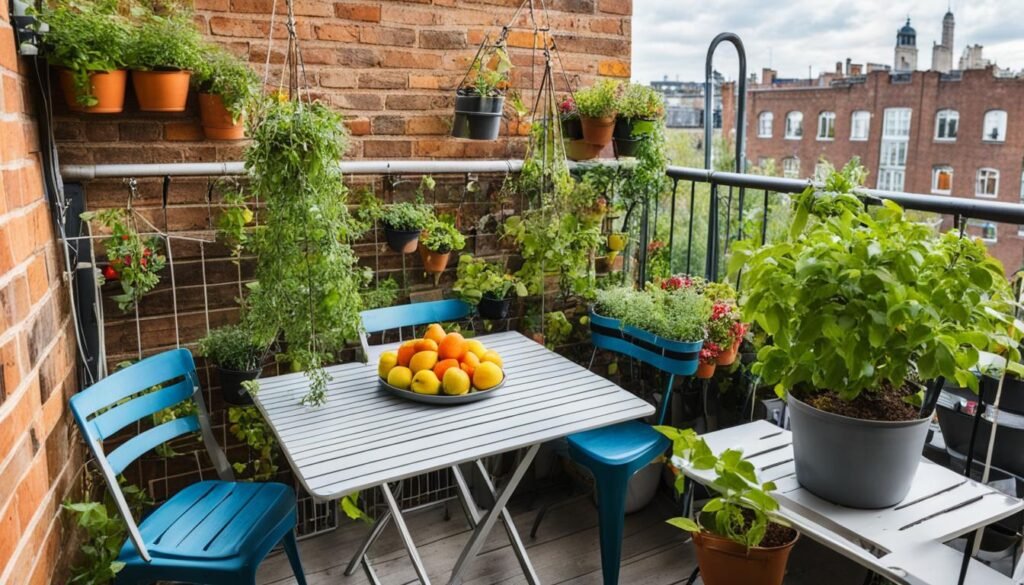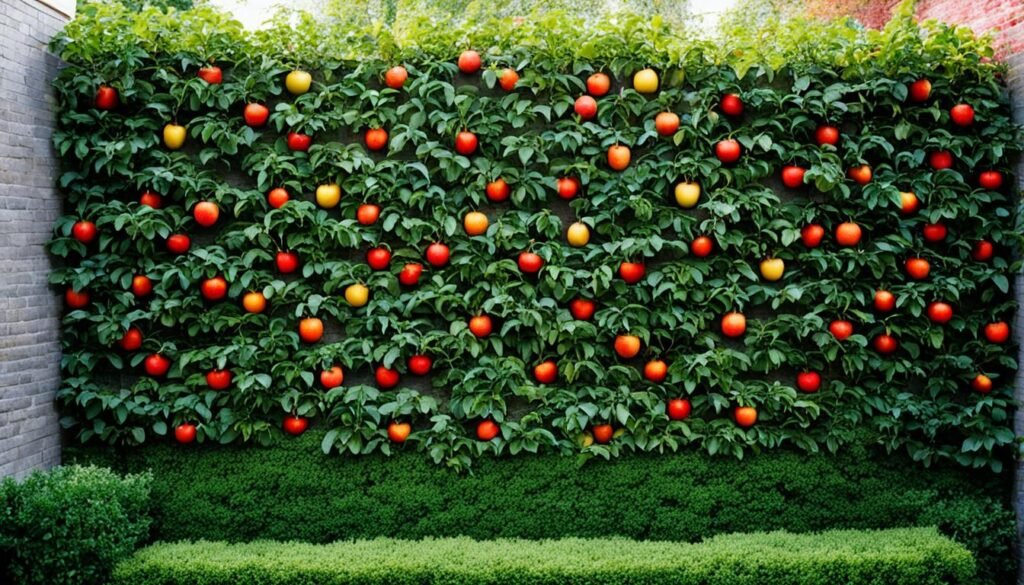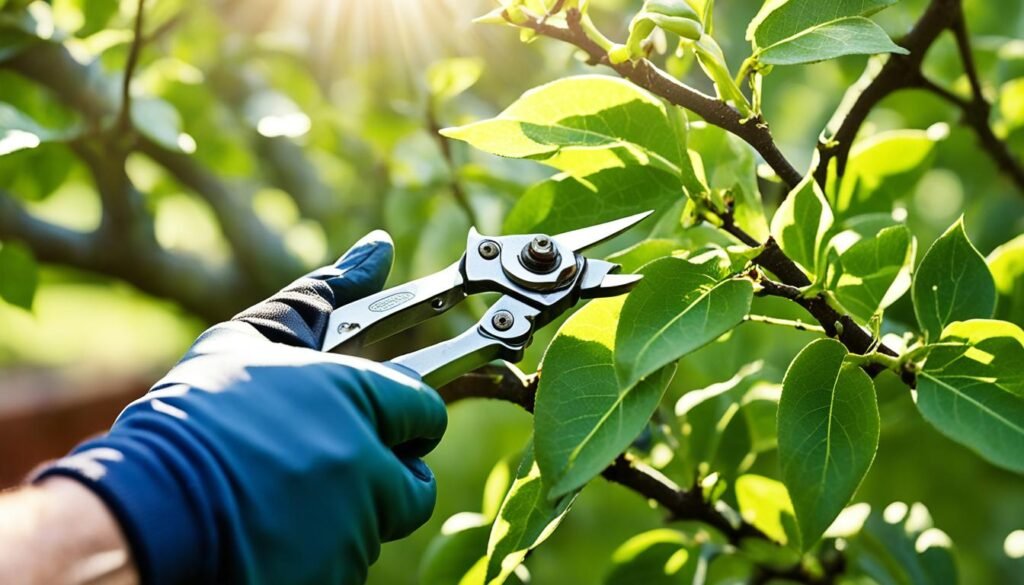Table of Contents
- Why I Love Growing Fruit Trees in Compact Areas
- Choosing the Right Fruit Trees for Limited Space
- Essential Tools and Supplies for Small-Space Orchards
- Container Gardening: My Go-To Method for Tight Spots
- Espaliering: Transforming Walls into Fruit-Bearing Wonders
- Pruning Techniques to Keep Trees Compact and Productive
- Fertilization and Nutrition in Small-Scale Fruit Tree Care
- Pest Management Strategies for Urban Fruit Trees
- Growing Fruit Trees in Small Spaces: Tips & Tricks for Success
- Harvesting and Storing Fruit from Your Compact Trees
- Troubleshooting Common Issues in Small-Space Fruit Growing
- FAQ
- What are the benefits of growing fruit trees in small spaces?
- How do I choose the right fruit trees for limited space?
- What tools and supplies are essential for maintaining fruit trees in small spaces?
- Can I grow fruit trees in containers?
- What is espaliering, and how can it help in small spaces?
- How do I keep my fruit trees compact and productive through pruning?
- How do I fertilize and nourish my fruit trees in small spaces?
- What are some effective pest management strategies for urban fruit trees?
- Do you have any tips or tricks for successfully growing fruit trees in small spaces?
- How do I harvest and store fruit from my compact trees?
- What are some common issues I might face when growing fruit trees in small spaces, and how can I troubleshoot them?
Ever dreamed of picking fresh fruit from your own trees but thought it was impossible in a small yard? Think again! As a city dweller who loves growing my own food, I’ve found that small yards can still host thriving fruit trees. It’s all about choosing the right trees and using smart gardening tricks.
Choosing the right compact fruit trees is key. Dwarf varieties can grow in containers, and espaliered trees can turn plain walls into fruit trees. With the right care, your small space can become a fruitful paradise.
This guide will share my best tips for growing fruit trees in small areas. Whether you have a tiny backyard, a balcony, or just a sunny windowsill, I’ll show you how to use your space well. Get ready to enjoy fresh, homegrown fruit and the happiness of growing your own food in a small space!
Key Takeaways
- Compact fruit trees are ideal for small yard orchards
- Urban gardening can yield fresh fruit even in limited spaces
- Proper planning and tree selection are crucial for success
- Dwarf varieties and container gardening maximize space
- Espaliering techniques allow fruit trees to grow on walls
- With the right approach, small spaces can produce bountiful harvests
Why I Love Growing Fruit Trees in Compact Areas
I’ve fallen in love with growing fruit trees in small spaces. It’s magical to pick fresh fruit from my tiny backyard. These trees have changed how I live in the city.
My adventure began with a single potted lemon tree on my balcony. Now, I have a mini orchard in containers and along my fence. It shows how much fruit you can produce in a small area with good planning.
Here’s why I adore compact fruit trees:
- Fresh, organic fruit right at my fingertips
- Beautiful blossoms that brighten up my space
- A sense of accomplishment with each harvest
- Conversations with neighbors who admire my little fruit forest
Growing fruit in small spaces has taught me patience and creativity. I’ve learned to train trees against walls and prune for more fruit in less space. It’s a fun learning journey, and the rewards are delicious.
If you’re thinking about growing fruit in the city, I encourage you to try it. The benefits of growing fruit in small spaces are many. And there’s nothing better than eating fruit you grew yourself.
Choosing the Right Fruit Trees for Limited Space
Choosing the right fruit trees for small areas is key for a thriving garden. Let’s look at some great options for compact spaces.
Dwarf and Semi-Dwarf Varieties
Dwarf fruit trees are ideal for tight spots. They grow 8-10 feet tall, fitting well in small yards. I prefer planting dwarf apple, peach, or cherry trees. Semi-dwarf trees are a bit taller, reaching 12-15 feet, but still easy to manage.

Self-Pollinating Trees
Self-pollinating fruit trees are great for small spaces. They don’t need another tree to produce fruit. So, you can grow just one tree and still get a lot of fruit. My top picks include self-pollinating cherry, peach, and some apple varieties.
Multi-Grafted Specimens
Multi-grafted fruit trees offer a variety of fruits on one tree. These trees have different fruit varieties grafted onto one root. I have a multi-grafted apple tree that produces three types of apples. It’s a smart way to save space and enjoy different fruits.
- Dwarf fruit trees: Perfect for small yards
- Self-pollinating fruit trees: Ideal for single-tree gardens
- Multi-grafted fruit trees: Variety in a compact package
By picking the right mix of dwarf, self-pollinating, and multi-grafted fruit trees, I’ve made a diverse and fruitful orchard in my small backyard. It shows you don’t need a lot of land to grow tasty fruit!
Essential Tools and Supplies for Small-Space Orchards
Having the right gardening tools is key for taking care of fruit trees in small spaces. I always have a set of high-quality pruning shears ready. These are for keeping my trees looking great. I use bypass pruners for live branches and anvil pruners for dead wood.
Keeping the soil healthy is crucial. That’s why I always use a simple soil testing kit. It lets me check the pH levels and nutrient content. This ensures my trees get the best care possible.
Organic fertilizers are a must for fruit tree care. Slow-release granules are perfect for trees in containers.
Watering can be a challenge in small spaces. That’s why I have a compact watering system. A collapsible watering can saves space, and a soaker hose waters multiple trees efficiently. Here’s what I always have on hand:
- Pruning shears (bypass and anvil)
- Soil testing kit
- Organic fertilizers
- Collapsible watering can
- Soaker hose
- Hand trowel
- Gardening gloves
With these tools, my small-space orchard thrives all year. Remember, quality is important when picking your fruit tree care supplies. Choose durable tools that will last for many seasons.
Container Gardening: My Go-To Method for Tight Spots
Container gardening is ideal for growing fruit trees in small areas. My potted orchard flourishes in my tiny backyard. I’m excited to share some tips on container gardening with you.

Selecting the Perfect Pot
Choosing the right container is key for growing fruit trees in pots. I look for large, sturdy pots that are at least 18 inches deep. This depth lets roots grow well. For dwarf trees, I use 15-20 gallon containers.
Ceramic or wooden pots are my favorites. They look great and keep the temperature steady.
Soil Mixtures for Optimal Growth
The right soil mix is crucial for healthy fruit trees in containers. I mix potting soil, compost, and perlite together. This blend holds moisture but also lets water drain.
I add slow-release fertilizer to feed my trees all season long.
Drainage Solutions
Good drainage is vital for potted orchards. If needed, I drill more holes in the bottom of my containers. To stop soil from washing away, I put landscape fabric over the holes.
I also add gravel at the bottom of each pot to help water flow better.
- Use containers with multiple drainage holes
- Elevate pots slightly to ensure water can escape
- Check drainage regularly to prevent root rot
With these tips, you can grow fruit trees in small spaces. Remember, they need regular watering and food. But the taste of fresh fruit makes it all worth it!
Espaliering: Transforming Walls into Fruit-Bearing Wonders

I’ve found a way to grow fruit trees in small spaces: the espalier technique. This method lets me train trees against walls or fences. It turns them into beautiful, fruit-producing art.
The espalier technique means pruning and shaping young trees to grow flat against a surface. I begin by picking a strong support and planting the tree 6 inches away from it. Then, I tie branches to the support, helping them grow sideways.
Wall-trained fruit trees have many benefits:
- Space-saving: Great for small yards or city gardens
- Increased sun exposure: This means more fruit
- Easier maintenance: Pruning and picking is simple
- Decorative element: It makes walls look interesting
I’ve had great success with espaliering apples, pears, and peaches. These trees do well with the training and love sunny spots. By using this method, I’ve turned my small space into a fruitful mini-orchard.
Pruning Techniques to Keep Trees Compact and Productive
Fruit tree pruning is key for keeping trees small and healthy. It’s important to know the right pruning methods for small spaces. Let’s explore how to keep your fruit trees in top shape.
Timing Your Pruning Sessions
I prune my fruit trees in late winter, when they’re dormant. This stops diseases from spreading and helps them grow strong in spring. Sometimes, I prune in summer too, to keep the tree small and improve the fruit.

Shape-Specific Pruning Methods
Every tree needs its own pruning method:
- Open center: I remove the central leader to create a vase shape
- Central leader: I keep one main trunk with branches below
- Espalier: I train branches to grow flat against a wall or fence
These methods help control the tree’s size and make sure it gets enough sunlight. This leads to better fruit production.
Tools for Precise Cuts
Using sharp, clean tools is crucial for good pruning:
- Hand pruners for small branches
- Loppers for thicker branches
- Pruning saw for large limbs
Clean cuts are important for the tree’s health and quick healing. I always disinfect my tools between trees to stop diseases from spreading. With these techniques, my compact fruit trees stay healthy and productive in small spaces.
Fertilization and Nutrition in Small-Scale Fruit Tree Care
Proper nutrition is crucial for growing healthy fruit trees in small spaces. Using the right fertilizers or organic methods can greatly improve your trees’ health.
I use a balanced, slow-release fertilizer for my container trees. I put it on in early spring and mid-summer. This keeps my trees well-nourished and helps them produce fruit.
Organic tree nutrition is also important to me. I mix compost into the soil when planting and add more on top each spring. Compost feeds the tree and makes the soil better.
For trees planted in the ground, I use different methods:
- Spread compost around the tree in spring
- Apply a balanced organic fertilizer in early spring and late fall
- Use foliar sprays during the growing season for a quick nutrient boost
Container trees need more care. I give my potted fruit trees a diluted liquid fertilizer every two weeks in the growing season. This helps them get the nutrients they need from their limited soil.
By focusing on your trees’ nutritional needs, you’ll get healthier plants and better harvests. Even in small spaces, you can have thriving fruit trees.
Pest Management Strategies for Urban Fruit Trees
Growing fruit trees in small spaces has its challenges, especially with pests. I’ve learned that keeping pests away requires a sharp eye and action. Urban orchard management means staying ahead of pests.
Common Pests in Small Orchards
In my garden, I’ve seen many pests. Aphids, scale insects, and codling moths often visit. These pests can quickly grow and harm fruit if not controlled.
Organic Control Methods
I choose organic ways to protect my fruit trees. Here are some methods I use:
- Neem oil spray for aphids and scale insects
- Pheromone traps to stop codling moths from mating
- Introducing ladybugs to eat aphids
- Pruning branches with pests
Preventative Measures
Preventing pests is crucial in my orchard. I keep the soil healthy, prune trees, and clean up fallen fruit. Planting herbs like marigolds and nasturtiums helps too.
These steps help me control pests without using harmful chemicals. It’s a green way to grow fruit in the city.
Growing Fruit Trees in Small Spaces: Tips & Tricks for Success
I’ve found some amazing small-space gardening tips that have changed my urban orchard. Let me share my favorite fruit tree care hacks to help you use your space well.
First, mulching is crucial. A layer of organic mulch keeps moisture in, stops weeds, and controls soil temperature. It’s a simple trick that greatly improves your garden.
Then, I’ve learned about vertical gardening. Training fruit trees to grow up trellises or walls saves space and looks great. This method is perfect for small areas.
- Use dwarf rootstocks to keep trees compact
- Practice regular pruning to maintain size and shape
- Implement companion planting to maximize space usage
Water management is key in small gardens. I use drip irrigation systems to water trees directly, saving water and preventing diseases. This has been a big win for my garden.
Lastly, foliar feeding is powerful. Spraying trees with liquid fertilizers gives them a quick nutrient boost. It’s a top fruit tree care hack for keeping trees healthy in tight spots.
Harvesting and Storing Fruit from Your Compact Trees
Learning how to harvest fruit is key to making the most of my small orchard. It’s all about picking at the right time. I look for signs like color changes, softness, and how easily the fruit comes off the branch. For apples and pears, I gently twist and lift them. Peaches and plums are ripe when they come off easily.
After picking, I make sure to store the fruit properly to keep it fresh. Here’s what I do:
- Apples: Keep them in a cool, dark spot or the fridge
- Berries: Put them in the fridge in containers that breathe
- Stone fruits: Let them ripen at room temperature, then store them in the fridge
For fruits I won’t use right away, I preserve them in small batches. Making jams, jellies, and fruit leather is a favorite of mine. It lets me enjoy my harvest all year and reduces waste. Plus, opening a jar of homemade peach preserves in winter is a treat.
Each type of fruit has its own storage needs. I make sure to research these to keep my harvest fresh for as long as possible. With these tips, you can enjoy your harvest long after the growing season is over.
Troubleshooting Common Issues in Small-Space Fruit Growing
I’ve dealt with many fruit tree problems in my urban garden. Not enough sunlight can slow down growth and cut fruit production. To fix this, I place trees near reflective surfaces or use grow lights to add more light.
Poor soil is a big issue for container trees. I create my own potting mix with organic stuff and slow-release fertilizers for good nutrition. For container trees, I check the drainage often and adjust watering based on the season and tree’s needs.
Space is always a challenge in urban gardens. I use creative methods like vertical growing with espaliering and columnar trees. These methods help make the most of small spaces. With the right strategies, even tiny areas can produce a lot of fruit!







